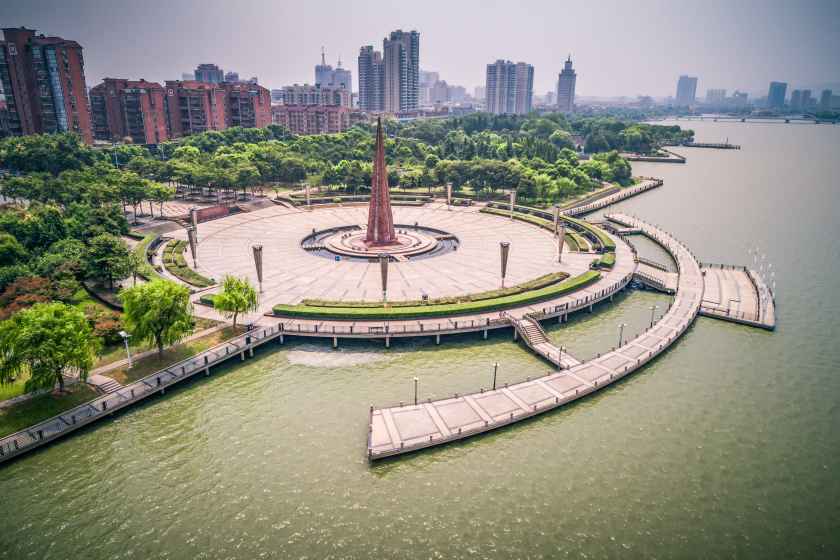North Korea's 2025 Pyongyang Trade Fair and Tourist Access

North Korea is set to take a significant step towards rejuvenating its tourism sector by welcoming overseas tourists to Pyongyang for the Pyongyang International Product Exhibition (PITF), also referred to as the Pyongyang Autumn International Trade Fair, in October 2025. This seven-day event, scheduled from October 24 to November 1, marks the country's first major tourism return since it closed its borders in 2020 due to the COVID-19 pandemic. Young Pioneer Tours, a Chinese travel agency specializing in North Korea tourism, has already begun recruiting tourists for this exhibition, signaling a cautious but notable reopening of the country to the world after years of isolation.
The Pyongyang International Product Exhibition is positioned as a pivotal event designed to showcase North Korea’s industrial and manufacturing potential on an international stage. With over 450 booths expected to feature products ranging from IT and energy solutions to pharmaceuticals and consumer goods, the fair aims to present North Korea as an active participant in global trade. This provides a rare opportunity for visitors to glimpse the country's industries, which typically remain under stringent government oversight. Despite ongoing diplomatic isolation, the event suggests North Korea's eagerness to promote specific economic facets, potentially to bolster its global legitimacy.
A notable aspect of this tourism initiative is the stringent exclusion of journalists, travel content creators, social media influencers, bloggers, and YouTubers. This restriction, confirmed by Young Pioneer Tours as a directive from North Korean authorities, underscores the regime’s overarching goal to maintain tight control over its international narrative and public image. By preventing independent media and content creators, who often operate with autonomy, from attending, North Korea aims to limit external scrutiny and avert any unsanctioned portrayal that might deviate from its carefully curated image. This move highlights a deep-seated apprehension towards global exposure, particularly through mediums that could reflect the nation in an unsanctioned manner.
Beyond the trade fair, the tour itinerary is designed to offer visitors a comprehensive experience of Pyongyang's cultural and historical landscape. Participants will have the opportunity to explore iconic sites such as Kim Il-sung Square and Pueblo Lake. A particularly significant inclusion is a visit to Myohyangsan Mountain, a revered natural landmark. This trip would mark the first time in five years that Western tourists have been permitted to visit Myohyangsan since the border closures of 2020. Myohyangsan, renowned for its stunning landscapes and historical significance, is also home to the International Friendship Exhibition, a museum housing opulent gifts presented to former North Korean leaders by foreign dignitaries. Such stops are integral to North Korea’s strategy of presenting a carefully crafted image of its cultural heritage and ideological values, although these visits are often highly scripted.
This tentative reopening follows earlier cautious steps, such as the brief allowance of Western group tourists into the Rason Special Economic Zone earlier this year, which was, however, abruptly halted. North Korea's approach to international engagement remains selective and controlled. While the country has recently allowed limited numbers of foreign visitors, including athletes and business delegates, to events like the Pyongyang Marathon, its primary objective appears to be showcasing a more accessible facade within strict confines. The decision to host the trade fair reflects an effort to project North Korea as open for business and international engagement, even as it firmly maintains control over external perceptions.
The evolving geopolitical landscape also plays a role in North Korea's tourism recovery. Historically, Chinese tourists constituted the majority of foreign visitors. While China remains North Korea’s main ally and trading partner, growing tensions between the two countries, particularly concerning Pyongyang's alignment with Russia amidst the Ukraine conflict, have led to a waning of China's influence. These diplomatic rifts may have contributed to a slower-than-expected recovery of tourism numbers, as Chinese tourists, once the cornerstone of the visitor base, are not returning in significant numbers. This creates new challenges for North Korea as it seeks to revitalize its economy and tourism sector.
In conclusion, North Korea’s decision to open its doors to foreign tourists for the Pyongyang International Product Exhibition represents a cautious and calculated step towards reintegration with the global community. While the event offers a rare glimpse into the nation's economy and society, it remains highly controlled, with little room for independent exploration. The continuous exclusion of independent media and content creators signifies a firm commitment to managing its international image and ensuring that all incoming information is filtered through an officially sanctioned narrative. As North Korea continues its gradual and selective reopening, the international community will observe how it balances increasing openness with its persistent need for internal and external control.
Recommended Articles
Tinubu Attends BRICS Summit in Brazil

President Bola Ahmed Tinubu participated in the 17th BRICS Summit in Rio de Janeiro, discussing Nigeria's economic refor...
Glastonbury Festival 2025 Fashion & Tourism Impact

Glastonbury 2025 was a dynamic event featuring standout musical performances by artists like Joy Crookes, evolving celeb...
Trump and Putin Discuss Israel-Iran Conflict De-escalation by Phone

Russian President Vladimir Putin and U.S. President Donald Trump held a significant 50-minute call, primarily discussing...
Netanyahu States Goal of Toppling Iranian Regime

The Middle East is gripped by its fiercest clash yet as Israel and Iran engage in direct military confrontation, followi...
US Implements Broad Travel Ban Sparking International Reactions and Debate

The Trump administration has enacted a new, sweeping travel ban effective June 9, 2025, targeting 12 nations with a full...
You may also like...
Diddy's Legal Troubles & Racketeering Trial

Music mogul Sean 'Diddy' Combs was acquitted of sex trafficking and racketeering charges but convicted on transportation...
Thomas Partey Faces Rape & Sexual Assault Charges

Former Arsenal midfielder Thomas Partey has been formally charged with multiple counts of rape and sexual assault by UK ...
Nigeria Universities Changes Admission Policies

JAMB has clarified its admission policies, rectifying a student's status, reiterating the necessity of its Central Admis...
Ghana's Economic Reforms & Gold Sector Initiatives

Ghana is undertaking a comprehensive economic overhaul with President John Dramani Mahama's 24-Hour Economy and Accelera...
WAFCON 2024 African Women's Football Tournament

The 2024 Women's Africa Cup of Nations opened with thrilling matches, seeing Nigeria's Super Falcons secure a dominant 3...
Emergence & Dynamics of Nigeria's ADC Coalition

A new opposition coalition, led by the African Democratic Congress (ADC), is emerging to challenge President Bola Ahmed ...
Demise of Olubadan of Ibadanland
Oba Owolabi Olakulehin, the 43rd Olubadan of Ibadanland, has died at 90, concluding a life of distinguished service in t...
Death of Nigerian Goalkeeping Legend Peter Rufai

Nigerian football mourns the death of legendary Super Eagles goalkeeper Peter Rufai, who passed away at 61. Known as 'Do...